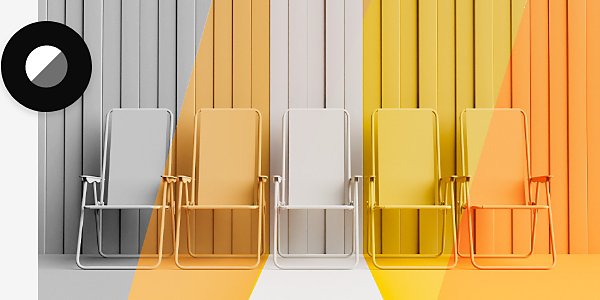What are adjustment layers?
Adjustment layers are a special type of layer that manipulate the color and tone of the layers beneath them. An edited image may have dozens of these layers by the time you’re done. Here’s what they can help you accomplish:

Fine-tune your photography.
Apply an adjustment layer to make the color balance of a photograph match your vision.

Be selective.
If you only want to change one portion of your image, open the Select and Mask workspace to paint a mask onto the adjustment layer. Paint in the Add mode to affect the areas you paint with your adjustment or in the Subtract mode to hide areas from your adjustment.

Unify your look.
If you like the look of the image adjustments you’ve made to one picture, copy and paste the layer to other images to apply the same adjustments and create a consistent tone.

Modify your adjustments.
Alter the settings of your adjustment layer whenever you want. Change the intensity of the effect by reducing or increasing the layer’s opacity, or hide your layers to reveal the original, unaltered image underneath.

Make nondestructive edits.
When you use layers to edit in Photoshop, each change you make to your original image, whether it’s airbrushing, dropping in some text, or adding an object, lives on its own level of your project. At any time you can reveal the original, unaltered image underneath. This process is known as nondestructive editing.
How to add a new adjustment layer.
You can find adjustment layers in the Layer panel. To create one, click the New Fill or New Adjustment Layer icon, or select Layer › New Adjustment Layer. This will bring up the Adjustments panel, where you can choose from a wide variety of different preset adjustments, including:
Brightness and contrast
Increase or decrease Brightness to lighten or darken the pixels in your image. Increase the Contrast in your image to make the light pixels lighter and the dark pixels darker.
Highlight and shadow levels
Choose Levels to adjust the tonal range of your image. Move the sliders under the graph to add black to shadows or white to highlights.
Color intensity
Enhance or decrease the colors in your image with a Vibrance adjustment layer.
Hue and saturation
Alter the hue of one or all of the colors in your image, or make the colors more or less saturated. Color saturation can have a big effect on your image’s tone.
Black and white
Turn a color image to black and white, then adjust the contrast between the two to achieve a unique look.
Precise highlight and shadow control
Use a Curves adjustment to make more complex changes to your image’s tonal range by setting control points on a graph representing highlights and shadows.
How to control which layers your adjustments affect.
You can modify your adjustment layer so it applies only to the layer immediately beneath it.
1. Click it:
In the Adjustments panel, click the icon for the adjustment you want to use.
2. Clip it:
Right-click the adjustment layer and select Create Clipping Mask.
3. Apply it:
Click the icon again to apply the adjustment to just the layer beneath it in the Layers panel.

How to apply an adjustment to a selection within a layer.
If you want your adjustments to affect only one portion of your image, you can apply them selectively using a layer mask.
1. Select it:
Choose an adjustment icon from the Adjustments panel.
2. Create it:
Create a new adjustment layer.
3. Brush it:
Each new layer includes an adjustment mask. Double-click the thumbnail for the layer in the Layers panel to view the mask, which will be all white. Use the Brush tool to paint black onto the portions of the mask where you don’t want the adjustment to apply. When you’re done, the adjustment layer will affect only the areas of the mask that are still white.
4. View it:
To see how your image looks with and without adjustments, click the Toggle Layer Visibility icon in the Properties panel.
Go beyond adjustment layers with these Photoshop tutorials.
Add more tools to your workflow and discover how to take your artwork further.

Change your colorscape.
Download a set of six gradient maps, then learn how to use them to make your color palette more vibrant.

Create a composite.
Use blending modes to create composites, collages, double exposures, and other creative combinations.
Find the Creative Cloud plan that's right for you.
Adobe Photoshop Single App
Get Photoshop on desktop and iPad as part of Creative Cloud.
Learn more
Creative Cloud All Apps
Get 20+ Creative Cloud apps, including Photoshop on desktop and iPad.
See what's included | Learn more
Students and teachers
Save over 60% on Creative Cloud All Apps.
See terms | Learn more
Purchase by phone: 800-585-0774
